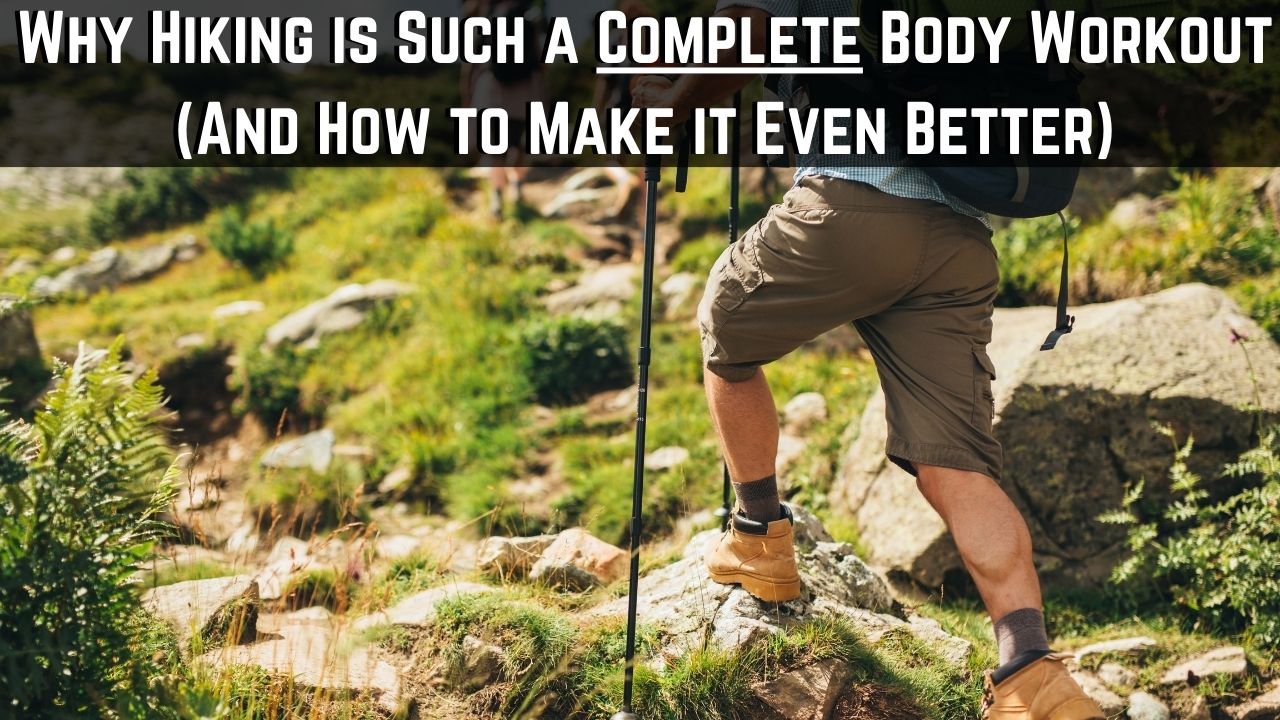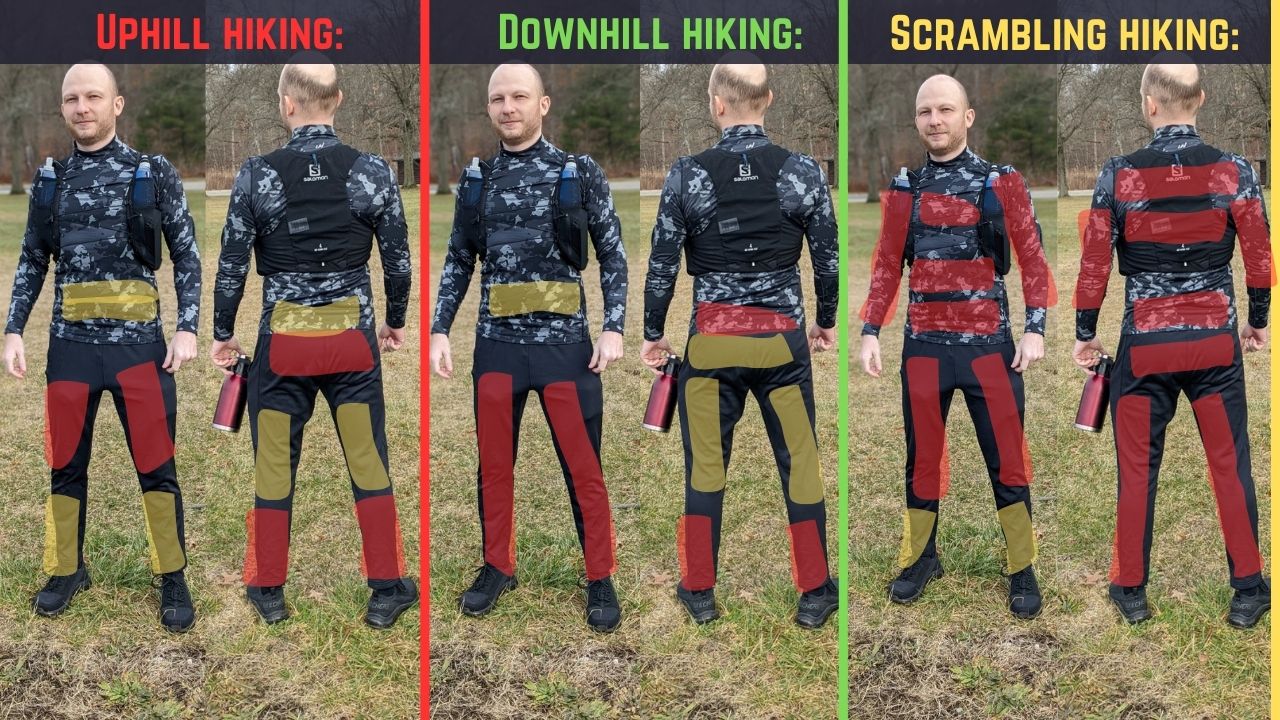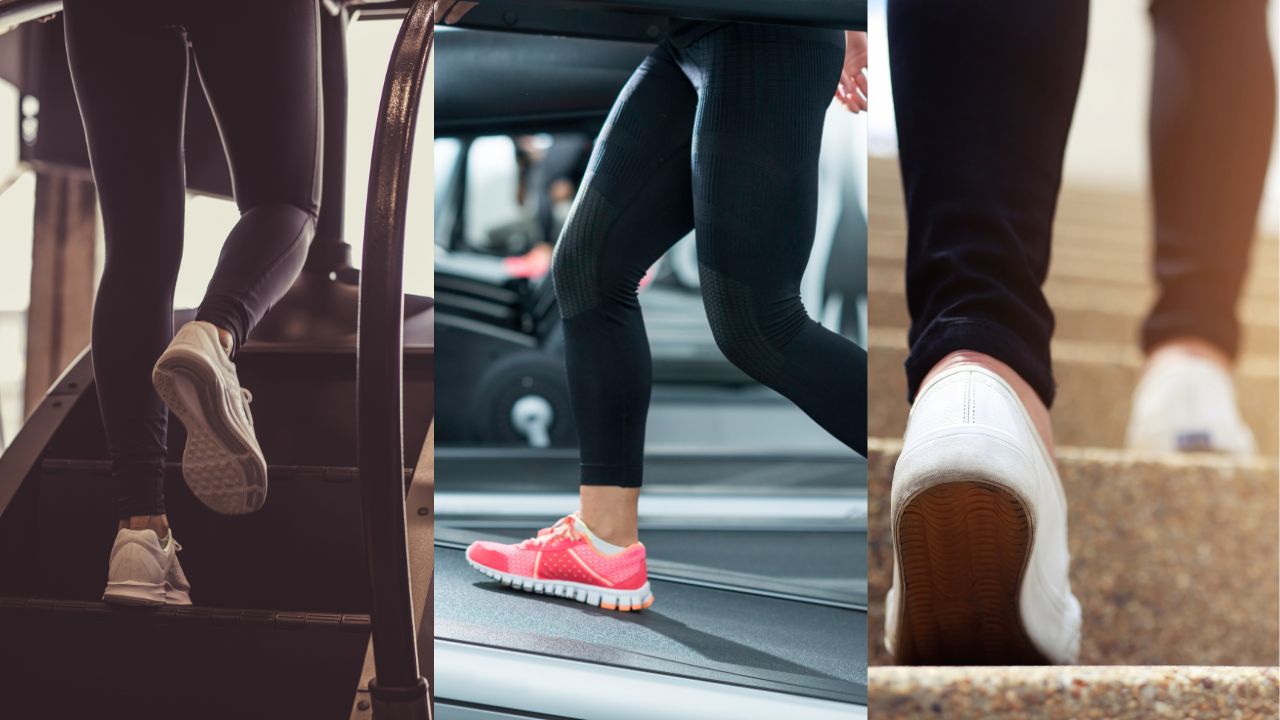This is Why is Hiking Such a Complete Lower Body Workout

The main reason why hiking is such a complete lower body workout is simple because multiple muscle groups are simultaneously activated when you’re moving up or downhill and here they are:
- Calves (front and back)
- Glutes (all 3 groups that comprise them)
- Thigh muscles
- Knees
- Lower core muscles
- Lower back muscles
Out of all the exercises I’ve done to activate these muscle groups, hiking has by far been one of the top activities that accomplishes this. But the type of hike you do also determines how they (and even more) are affected and in this post I want to show you how to get the best results from hiking on these muscle groups.

Hiking upward vs downward impacts the lower muscle groups differently too:

- When you hike upward, you’ll typically activate all of the above muscles but more focus will be on your calves, glutes, knees, thighs and lower core muscles.
- When you hike downward, you’ll also activate the same muscle groups but there will now be a more “impact” effect on your knees, front calves and lower back. Sometimes these impacts can cause injuries so it’s important to hike slowly when going down to improve the effect the lower body workout.
- When you’re scrambling/climbing, you will still activate the same muscles but the difference in this type of hike is that your upper body muscles will now be activated too, plus there will also be more effect on your thighs and calves during this activity.
The intensity of the hike matters a lot:
Hiking on a flat surface vs say hiking up a 45 degree angle are totally different hiking experiences and the 45 degree option will obviously be a much tougher and more effective workout on your lower body whereas the flat surface hike will be more of a gradual walk that likely doesn’t even activate the lower core or back muscles much, let alone the legs and calves. The speed at which you move also has a huge impact on how the hike affects your lower body muscles too.
Tips: If you’re looking to really give you lower body a serious workout, then try to find hikes with either higher elevations that require you to lean forward or scramble to reach the top and/or hikes with changeups meaning trails that mix things up where you may start on a flat walk, then move up, then down, scramble a bit. All of these elevation changeups constantly keep activating and reactivating different muscle groups with different intensity levels, thereby making the exercise that much more effective.
If you’re a beginner hiker, look for hikes on apps like Alltrails that have less than 500 feet of total elevation. If you’re more of an experienced hiker and in shape, aim for 1,000 or above elevation trails.
Adding a backpack with water and other things to bring on a hike will basically be an extra weight on your entire hiking workout and thus provide an even better lower body workout (be careful with this because it will add more strain on your lower back muscles). In addition to that the weight also helps activate upper body muscles as well (shoulders but it does put strain on the lower back).
3 alternative workouts to hiking that also activate the same muscle groups:
For me personally it’s tough to hike every single day since I live in NYC and the best hikes near NYC are typically 2 or more hours away, so when I’m not engaged in that what I’ll typically do is find alternative exercises and workouts that basically activate the same muscle groups and here are my top choices:

- Stair master: This is a common machine I use, but I highly recommend you avoid using your hands when walking on it. This adds more intensity to your upwalks.
- Treadmill (on incline): This is also something I’ll do before/after a stairmaster workout. Treadmills are good for walks/jogs but some have the option to add degrees of incline and when they are more raised, the same walk/jog becomes a lot tougher and basically replicates a lot of trails I follow. The machine I use can go up to a 20 degree incline and I’ll typically stay on that until it says I reached 1,000 feet in elevation.
- Walking up the stairs: This is basically stairmaster but without the machine and I personally think it’s way more effective. If you can walk up the stairs often every day, not only will you be better prepared for a hike but you’ll also be getting all of the lower body workout benefits of a hike, just outside that enviornment (try to avoid using the handles as it makes it easier).
When compared to hiking, these exercises are almost as good on the lower body, but because hiking is out in the open and you’re often walking/hiking/scrambling on uneven surfaces, even more muscles are activated which is why it is the top choice for working the lower body.
You can even add weights when using these exercises (vests for example) to make it even better and there’s even lower body workouts for hikers you can engage in that incorperate these same exercises for awesome prep workouts for the trails.
Trying adding trekking poles to your hike (here’s why):
There’s a lot of health benefits for hikers that use trekking poles. Among the fact that they make hike “easier” in some ways, this will actually activate the upper body muscles (shoulders, chest, triceps, forearms, back muscles) and reduce the stress on your lower body when you’re hiking. Now you may be thinking that this is a bad thing because you’re looking to get a better lower body workout right?
Well it depends on how long of a hike you’re doing. At some point putting too much stress on your lower body muscles can have a negative effect and it’s important to know how long/intense of a hike you’re capable of doing. I consider myself a hiker that can cover long distances and tough trails, but I always bring trekking poles with me nonetheless because even my muscles get tired and trekking poles reduce the “damage” and intensity of the hike if it becomes too much. Plus because they transfer a chunk of the stress from my lower body to my upper body, I still get the benefits of the same lower body muscle groups being activated while at the same time putting the upper muscles to work!
The ones I use are the Trailbuddy trekking poles which can fold/unfold to whatever height I need, plus they have really helped me in countless hiking situations where thanks to them I was able to hike longer, higher and even while injured (you should always take into consideration that hiking can be risky too).
